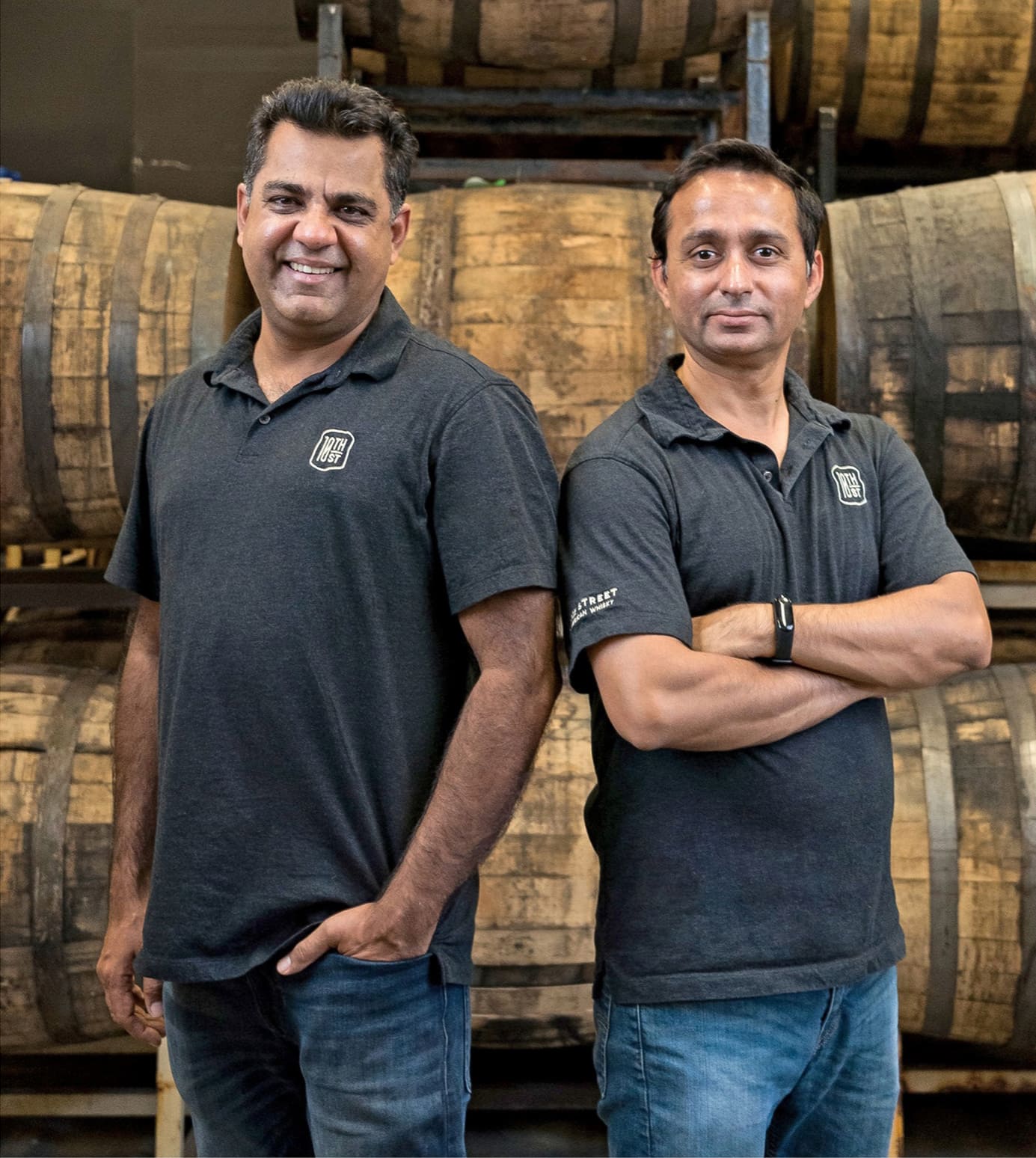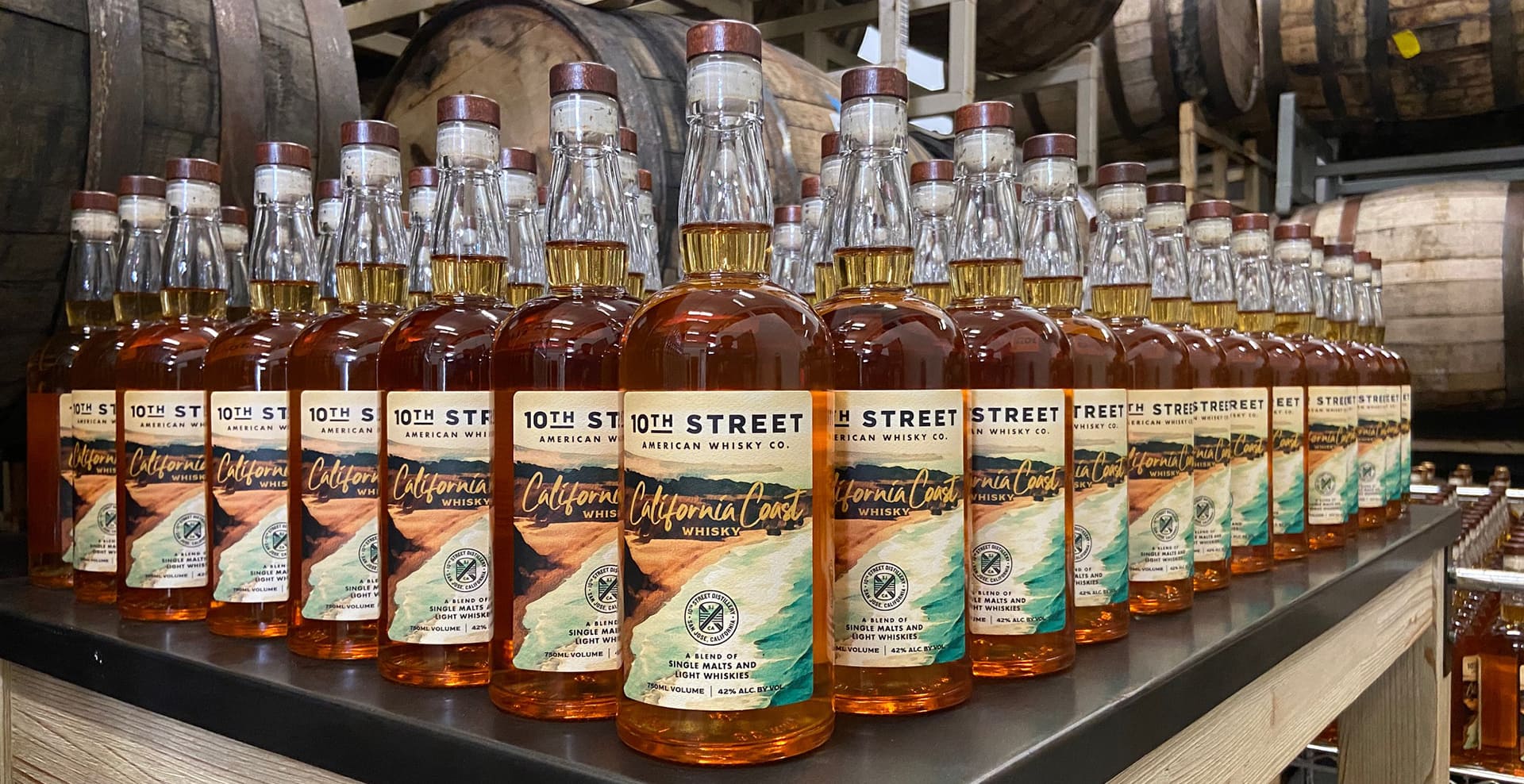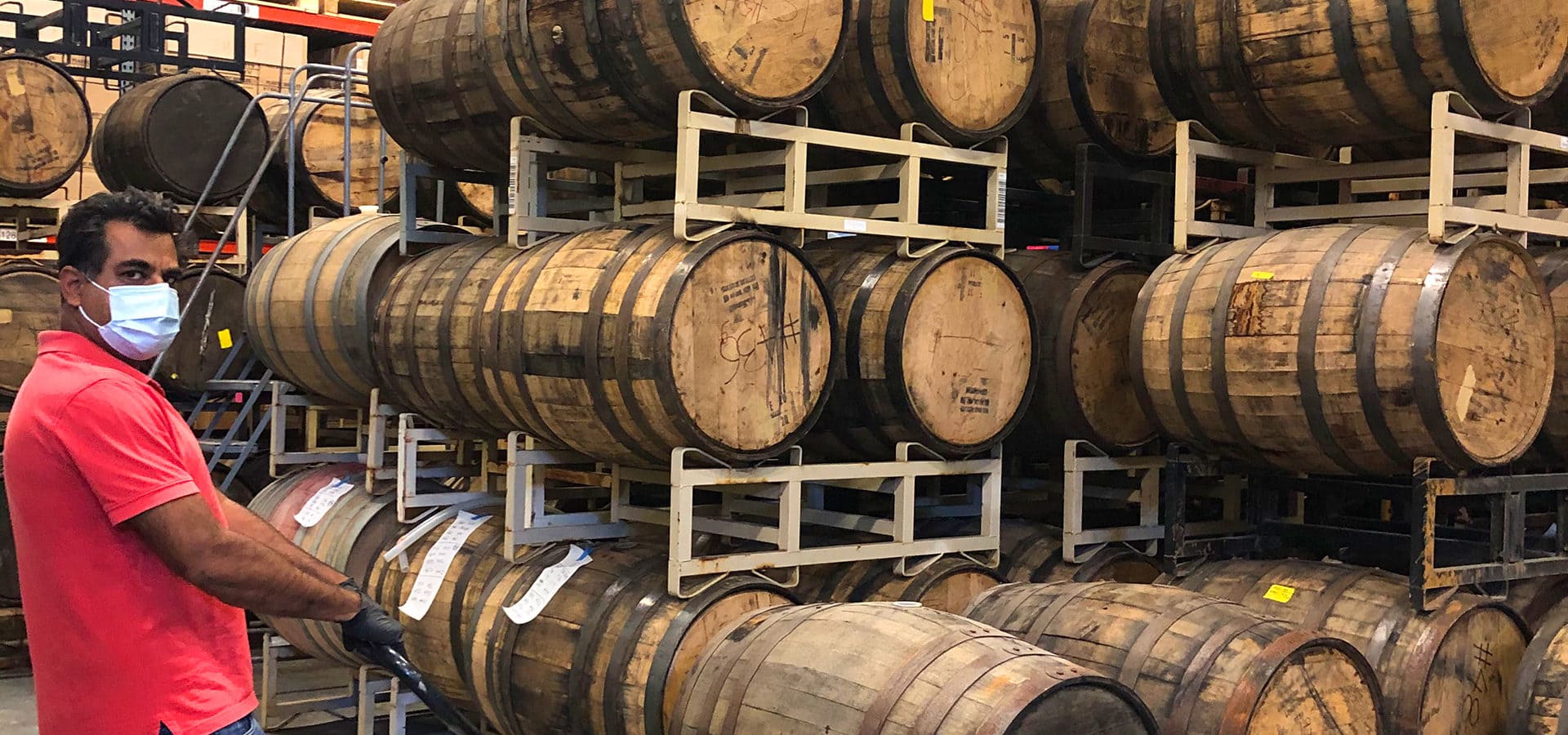This Urban Distillery in San Jose Engineers a Lineup of American Whiskies with Scottish Flair
Single malts united in spirit.
-
CategoryArtisans, Farm + Table, Makers + Entrepreneurs, Mixology, Small Businesses
-
Written byShaun Tolson
The genesis of 10th Street Distillery in San Jose begins with a sense of loss.
In the late 2000s, Virag Saksena spent his days working as a senior director of product development in the tech industry, while at night he refined his skills as an accomplished homebrewer. Despite his commitment to the brewing craft, beer wasn’t Saksena’s only beverage of choice—he was also a passionate whisky enthusiast with a penchant for peated Scotch single malt.
While shopping at K&L Wines in Redwood City about a dozen years ago, Saksena stumbled upon a limited release from Laphroaig—a 30-year-old single malt, which had spent the entirety of its maturation in sherry casks. Saksena ponied up $250 for the bottle and immediately fell in love. The fact that the whisky was a limited release didn’t stop Saksena from finishing the bottle. When he did, he simply returned to K&L Wines and purchased another one. Eventually bottles became scarce, until finally—about a year after his initial discovery—Saksena couldn’t find any more.

(Today, online retailer The Whisky Exchange offers bottles of that rare Laphroaig for almost $3,000; and Bowmore recently unveiled the first of its annual 30-year-old releases for $2,500. Those prices reflect the whisky market’s extreme evolution over the past 15 years, but that’s a different story for another time.)
“I was almost 40,” Saksena recalls of that period in his life, “and that was the first time that I had felt a sense of loss. I had lost something that I had loved.”
Interspersed with that bereavement was a moment of inspiration. The transcendent whisky that Saksena had enjoyed but could no longer find sparked in him the desire to make a whiskey of his own. Thanks to more than a decade of experience brewing beer, Saksena had enough knowledge of the steps involved in making whiskey to begin experimenting at home—and thanks to an engineering degree, he had the mechanical aptitude to modify the small-scale stills that he had purchased, which allowed him to create the type of whiskey he desired.

During the 8-year period of experimentation that followed, Saksena completed a two-week apprentice program on the Scottish island of Islay—a region best known for its distinctive, peated whiskies. “The main reason for going out there was to understand the craft,” Saksena says, explaining that at the time he understood the basics of distilling but his ability to do it was useless without firsthand sensory training. “You have to understand the smells and tastes. Sometimes, something is going to taste really bad, but you have to understand the difference between bad, which will remain bad, and bad, which will become good.”
“It’s about learning the craft of distilling. Understanding those tastes, those smells.”
As Saksena traveled around the 239-square-mile island, visiting many of its nine distilleries, he made a noteworthy observation. The wash—that is, the liquid that results from mashing the malted barley and fermenting it with specific strains of yeast—was consistent in flavor across the island. In other words, the wash created at the Ardbeg, Laphroaig, and Kilchoman distilleries, for example, all tasted exactly the same.
Saksena further learned how each of those distilleries manipulated that liquid in different ways—using stills of different shapes and sizes, heating the liquid to different temperatures during the distillation process, and selecting unique cuts (the period during the distillation process where only the most flavorful and desirable compounds of the spirit are captured). That education not only taught Saksena how distilleries create characteristic flavor profiles, it instilled in him the knowledge that would later be necessary as he attempted to create a single malt whiskey of his own in a very disparate climate.

“It’s about learning the craft of distilling,” Saksena says. “Understanding those tastes, those smells.”
In 2017, after almost a decade of home distilling trial and error, Saksena partnered with his college friend Vishal Gauri (a chemical engineer and fellow Scotch enthusiast), and together they opened 10th Street Distillery. Tucked away in the corner of an industrial park, the 6,500-square-foot facility adheres to most urban craft distilleries in appearance. Two gleaming, 3,000-pound copper stills share space with racks of 55-gallon oak barrels that hold any of the five expressions that the distillery currently produces. It is the studio apartment equivalent for whiskey making: one large, open space dedicated to every facet of production.
As for the age of 10th Street’s whiskies, Gauri and Saksena have grown accustomed to telling those who ask that they mature their whiskies “for as long as it takes.” While that is true, the length of time typically spans about 18 months. Some are aged for slightly less, others for a slightly longer period of time, and some—like the brand’s limited wine cask expressions—will spend another 10 months in locally sourced Pinot Noir barrels and imported Port casks.
Consumers who have been conditioned to value age-statements may initially scoff at the idea of a 2-year-old whiskey being any good, but San Jose’s warm and dry climate is a key factor as to why the flavor of these youthful whiskies belie their age. As Saksena explains, Scotland’s cool and wet climate allows whisky to extract flavor from wooden barrel staves at a languid pace. Full barrels of whisky aging in Scotland’s rickhouses will evaporate at a rate of two to three percent per year. By contrast, San Jose’s climate accelerates the rate of that barrel-flavor extraction. In the process, full barrels of whisky will lose anywhere from 10 to 15 percent of their volume in a given year due to evaporation.

Because heat activates the chemical reactions that occur inside the barrel, Saksena understood that a raw distillate made to whisky specifications that work in Scotland won’t work in San Jose. For that reason, he and Gauri had to tweak and experiment with the specs and conditions of the entire whiskey-making process. After extensive trial and error they finally landed on the right measurements, temperatures, and lengths of time for the mashing, fermentation, and distillation phases; and they soon dialed in their cuts to create a well-balanced and clean new-make spirit that would evolve into an elegant single malt whiskey as it matured quickly in barrels set in San Jose’s warm and dry environment.
Not surprisingly, the first whiskey that Saksena and Gauri created is a single malt distilled from peated barley that they source from the islands whisky region of Scotland—a sector that includes all of the westerly and northern Scottish islands with the exception of Islay. Although Saksena would love to make a peated single malt in the Islay tradition, 10th Street’s CEO says that the beverage conglomerate Diageo, which owns Islay’s Port Ellen Maltings, refused to sell him its raw material. Because 10th Street’s Scottish-sourced peated barley isn’t from Islay, it’s devoid of the polarizing iodine and briny notes that characterize Islay’s peated whiskies. That, by itself, isn’t a bad thing.
Instead, 10th Street’s peated single malt is teeming with heathery, floral, and honey notes. “A lot of people who don’t like peated whiskies say they love this one,” Saksena acknowledges. “You can taste the malt, you can taste the wood, and you can taste the peat. It’s a well-balanced whiskey where you can actually enjoy all three elements while you sip it.”

Saksena and Gauri next created an unpeated single malt distilled from domestic, 2-row barley that is aged in ex-bourbon casks that have been shaved, toasted, and re-charred. The barrel treatment allows the distillate to take on some of the characteristic wood flavor, but not so much that it overpowers the flavor of the malt. This whiskey, Saksena declares, is an American single malt that will appeal most to bourbon lovers.
Along the way, the founders of 10th Street also produced California Coast, a blended whiskey made up of the two aforementioned single malts and a sourced American grain whiskey made exclusively from corn. According to Saksena, the whiskey makes an amazing highball. More importantly, it was his and Gauri’s interpretation of how a blended whiskey from California should taste. “It’s an easy-drinking whiskey, and for us that signifies California,” he says. The marriage of peated Scottish barley with unpeated American barley and American corn “created this interesting blend, a fusion, which is what California is all about.”
Despite the successes that 10th Street Distillery has garnered since releasing its first whiskey in 2019—accolades that include several gold and double-gold medals at numerous international spirits competitions—Saksena acknowledges that the journey has not been without its challenges. “We jumped in with both our feet not knowing what we didn’t know,” he says. “We didn’t know really what the market size for American single malts was, and we didn’t know how hard it would be to get distribution.”

On the topic of distribution, 10th Street is currently available only in California. Saksena and Gauri had hoped to expand into other states in 2020, but the global pandemic caused by Covid-19 forced them to table those plans. Moreover, Saksena believes that the pandemic, while an economy-driver for the industry as a whole, could have a potentially catastrophic impact on many fledgling craft brands attempting to establish themselves.
“It’s a really hard time right now for people trying to build brands, because people aren’t going into a store exploring,” he says. “People are staying at home so they will buy what they know from established brands. I don’t know how many of the [small] craft distilleries are going to survive this.”
10th Street Distillery is just the kind of spirits producer that Saksena describes, yet he doesn’t feel the same angst nor is he overcome with worry when he thinks about the longevity or the viability of his brand. “While the pandemic has affected our growth,” he says, “we are confident that we’ll survive.”
Where Are You Eating at Arroyo Seco Weekend?
Stars of the LA food scene will be on hand for the 2nd annual outing
Get the Latest Stories






